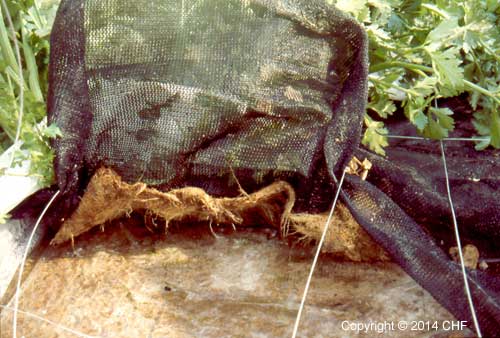Heating nutrient solution increases growth rate of tomatoes
Heating the nutrient solution in order to increase growth rate can provide growers an edge over competitors. This applies to all business categories. Heating up the nutrient solution can be complicated and expensive and that is where the competitive edge is. Not every grower has the ability to implement the technology effectively.
Heating the root zone of seedlings is not uncommon, especially with protea growers. The growth rate curve is more exponential with younger plants than with mature plants where the benefit is more linear.
Heating up the root zone of lettuce gives excellent results since the grower is more concerned with total dry mass than a selective component (such as fruits) of the plant. Two main factors contribute to accelerated growth, an increase in nutrient uptake and an increase in transpiration. Another significant benefit is less risk of calcium, phosphorus and iron deficiency during colder periods. The benefit of calcium and the increase on transpiration will also reduce the risk of tipburn in lettuce, but that is usually not a problem during colder months where root zone heating is applied. Interestingly cucumber plants do not provide a positive reaction to nutrient solution heating 1)Urrestarazu, Miguel & Salas Sanjuán, Maria del Carmen & Gómez, Adrián & Valera, Desirée. (2002). Cucumber Crop Response to Heated Nutrient Solution in Soilless Crop. VI International Symposium on Protected Cultivation in Mild Winter Climate: Product and Process Innovation 614. 614. 649-653. 10.17660/ActaHortic.2003.614.97.
The influence of root zone heating is quite complicated. In some cases crops show an economical difference and some not. Some effects are not visual such as reduction in nitrate and phosphate emissions from the substrate2)Urrestarazu, Miguel & Salas Sanjuán, Maria del Carmen & Valera, Diego & Gómez, Adrián & Mazuela, Pilar. (2008). Effects of Heating Nutrient Solution on Water and Mineral Uptake and Early Yield of Two Cucurbits under Soilless Culture. Journal of Plant Nutrition. 31. 527-538. 10.1080/01904160801895068.. Growers must do their own research to see if it works or not.
The advantage is significant for tomato growers. Heating the root zone increased the size and number of fruit, thus increasing total yield. But all is not rosy, heating the root zone does delay harvesting compared to unheated crops. However, if blossom-end-rot is a problem, the increase in calcium availability and higher transpiration rate can reduce this pesky physiological disorder.
Be careful to neglect air temperature. The benefit of optimum air temperatures outweigh higher root temperatures with low air temperatures. The reason is because solution temperature and night air temperature influence fruit production independently.
The best results were obtained using NFT systems where the water can be heated either by solar energy or oil/gas/coal. Heating plants grown in rockwool, or growth media that has a lot of air in between is not as effective.
References
| ↑1 | Urrestarazu, Miguel & Salas Sanjuán, Maria del Carmen & Gómez, Adrián & Valera, Desirée. (2002). Cucumber Crop Response to Heated Nutrient Solution in Soilless Crop. VI International Symposium on Protected Cultivation in Mild Winter Climate: Product and Process Innovation 614. 614. 649-653. 10.17660/ActaHortic.2003.614.97. |
|---|---|
| ↑2 | Urrestarazu, Miguel & Salas Sanjuán, Maria del Carmen & Valera, Diego & Gómez, Adrián & Mazuela, Pilar. (2008). Effects of Heating Nutrient Solution on Water and Mineral Uptake and Early Yield of Two Cucurbits under Soilless Culture. Journal of Plant Nutrition. 31. 527-538. 10.1080/01904160801895068. |




